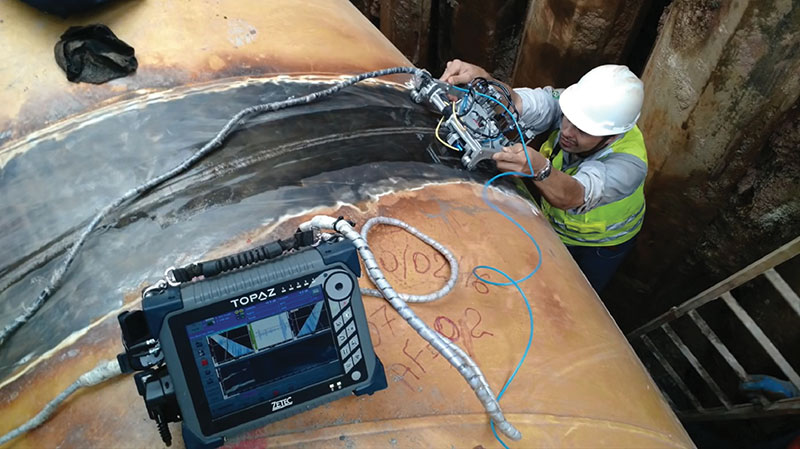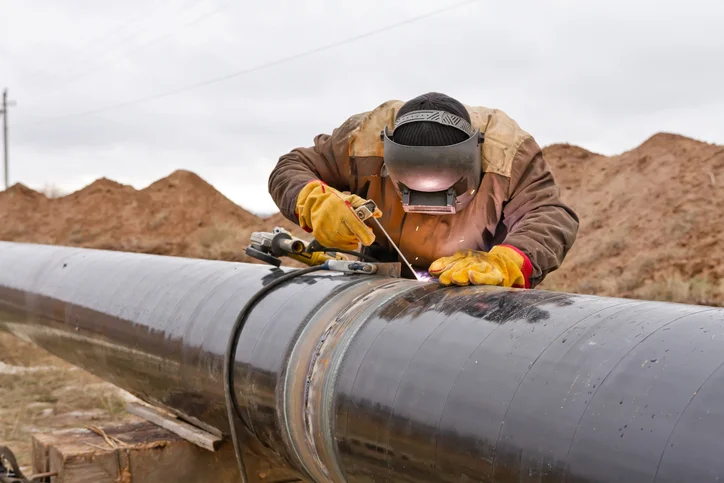Comprehensive Summary of Pipeline Welding Assessment Treatments
Pipe welding examination treatments play a crucial role in ensuring that welded connections fulfill rigid market standards and requirements. From careful pre-welding evaluations to comprehensive post-weld analyses, a well-defined inspection procedure is vital for maintaining the architectural sturdiness of pipes.
Pre-welding Evaluation Preparations
Prior to beginning the welding process, thorough pre-welding inspection prep work are necessary to make sure the stability and quality of the weld joint. These prep work include a precise examination of the products to be welded, the welding equipment, and the job atmosphere. By conducting detailed pre-welding assessment preparations, prospective concerns can be identified and fixed early on, leading to reputable and high-quality weld joints.
Welding Treatment Certification
Thorough pre-welding assessment preparations lay the structure for the crucial procedure of Welding Procedure Credentials, guaranteeing the honesty and high quality of the weld joint. Welding Treatment Certification (WPQ) is a vital step in the welding process that entails testing and accrediting welding procedures to guarantee they fulfill particular criteria and requirements. The WPQ procedure generally consists of welding procedure spec growth, welding procedure certification screening, and documentation of the results.
Throughout welding treatment specification advancement, crucial details such as the welding process, welding products, joint layout, and welding parameters are defined to develop a comprehensive procedure. Consequently, welding treatment certification screening is conducted to validate the suggested treatment's honesty. This screening frequently includes welding test vouchers that undergo various mechanical and non-destructive tests to evaluate the weld's high quality and adherence to the defined requirements.
In-process Weld Examination
Throughout the welding procedure, in-process weld inspection plays a vital function in making certain the top quality and honesty of the weld joint - Pipeline Welding Inspection. This type of inspection involves keeping track of the welding specifications, examining the weld grain formation, and finding any kind of possible flaws or interruptions as they take place. By conducting in-process weld inspections, welding operators can promptly address any kind of concerns that might develop, consequently ensuring and protecting against more flaws that the final weld meets the called for requirements
Usual methods made use of for in-process weld evaluation consist of visual evaluation, liquid penetrant testing, magnetic fragment testing, ultrasonic testing, and radiographic screening. Visual inspection is often the very first step at the same time, permitting examiners to visually examine the weld for surface irregularities such as splits, porosity, or incomplete blend. A lot more advanced approaches like ultrasonic testing and radiographic screening offer detailed understandings into the inner structure of the weld, ensuring that there are no concealed defects that can compromise the weld joint's toughness and integrity. On the whole, in-process weld evaluation is crucial for preserving the top quality and reliability of bonded pipelines.
Non-destructive Screening (NDT)
Non-destructive Screening (NDT) is a crucial technique used in pipe welding evaluation to evaluate the stability of weld joints without creating damage to the welded structure. By using numerous NDT strategies, inspectors can assess the high quality of welds and determine any kind of issues or suspensions that may jeopardize the structural strength of the pipe. Usual NDT methods made use of in pipeline welding examination consist of Radiographic Testing (RT), Ultrasonic Testing (UT), Magnetic Bit Checking (MPT), Fluid Penetrant Screening (LPT), and Visual Testing (VT)
RT involves making use of X-rays or gamma rays to produce pictures of the internal structure of the weld, allowing inspectors to discover problems such as porosity, fractures, or incomplete fusion. UT uses high-frequency acoustic waves to spot flaws under the surface area of the weld, using thorough details regarding the dimension and place of problems. MPT and LPT are used to identify surface-breaking issues Get More Information by using Check Out Your URL penetrant liquids or magnetic particles to the weld location. Furthermore, VT includes visual inspection of welds to identify any kind of noticeable flaws.
Post-weld Evaluation and Documentation


Documents of post-weld assessment findings is essential for keeping high quality control records and making certain compliance with sector standards and laws. Comprehensive records ought to consist of information regarding the inspection techniques made use of, the location and nature of any kind of defects discovered, and any kind of restorative activities taken - Pipeline Welding Inspection. Proper documentation not just offers as a record of the weld's high quality yet also help in future upkeep and inspection processes
Verdict

In conclusion, pipeline welding evaluation procedures play a vital duty in ensuring the quality and integrity of welds. Overall, adherence to proper evaluation procedures is crucial to the success of pipeline welding jobs.
From thorough pre-welding examinations to thorough post-weld analyses, a distinct examination procedure is necessary for preserving the structural stability of pipelines. By conducting in-process weld inspections, welding operators can promptly address any concerns that might arise, thereby preventing further defects and ensuring that the final weld fulfills the called for requirements.
Usual approaches utilized for in-process weld assessment include visual evaluation, liquid penetrant screening, magnetic bit screening, ultrasonic testing, and radiographic testing.Non-destructive Testing (NDT) is you could try these out a critical technique employed in pipe welding evaluation to analyze the stability of weld joints without causing damages to the welded framework. Post-weld evaluation includes various methods to evaluate the welds for problems, including visual inspection, color penetrant screening, magnetic fragment testing, ultrasonic screening, and radiographic screening.